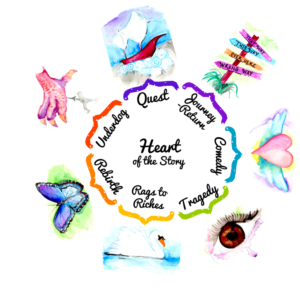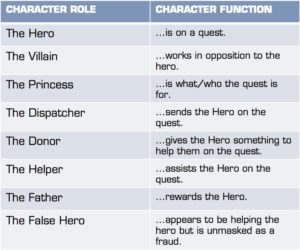As a young boy, little more than a toddler, Magnus Carlson possessed the ability to remember complex patterns and to play chess like an aged master. His proud parents recount when given a vast array of national flags, with facts like national population and more, how Magnus quickly remembered the facts and began to make connections and patterns fay beyond any sensible expectation of a young child.
Magnus has never been a typical boy or man. He is a chess phenom: the world’s greatest chess player, whose rating is the highest of all time. Clearly, Magnus has a genetic inheritance and intelligence that we cannot all simply practise deliberately to attain, but we can learn from his truly awesome expertise. In this short video Magnus describes how his mind words, how he thinks about chess, and how his memory store of chess games gives him the ‘big picture‘ to make the right moves under pressure:
Magnus has a sense of making complex patterns memorable, sensible and useable in his games. From his knowledge of the ‘big picture‘ of a million chess moves and countless thousands of games, Magnus has developed his “intuition” for the game. To many it may seem like he is wrestling with freeing some chess muse, an innate giftedness for chess, but in truth his ‘intuition’ resides in his ability to recall and remember the big picture of 10,000 past games and lots of hard thinking:
“The fact that I can be considered an intuitive chess player, I think, partly comes from my early experiences (as a child), where I put all those hours with myself on the chess board and tried out things. It meant that I eventually got a feel for chess, an understanding of the game. General good players use more long-term memory than short-term memory during a chess game. You use past experiences. It is the intuition that is largely based on the past experiences.”
‘Secret of Magnus Carlson’s Chess Intuition: Hours and Hours of Trying Out things As a Kid’
Magnus presents us with a quite extreme example of the journey from novice to expertise. Like Mozart, Curie, or Picasso, he represents the peak of his field, but the analogy stands: creating a vast store of ‘moves’ in our memory helps us see the ‘big picture‘.
What can teachers possibly apply from the seemingly isolated stories of genius? Well, we can help every student we teach make their own steps along the path from novice to expert. In fact, it is the very stuff of school. How do we do it precisely? Well, that is a trickier prospect.
As an English teacher, what I recognise repeatedly is that students who haven’t read a great deal lack any semblance of the ‘big picture’. They simply haven’t been reading or thinking about literature in the ways Magnus developed his chess expertise. They cannot place texts, ideas, social factors or even word choices into the bigger picture of literature and society. Students who possess the ‘cultural currency’ of the big picture of literature and a vast store of vocabulary, like Magnus, appear to flourish effortlessly in school. Their essays and insights are labelled ‘perceptive’ and ‘sophisticated’.
Now, English students who have read a great deal of literature and who possess an academic vocabulary of something like 50,000 words are few and far between. We most often deal with students who are catching up and who have significant gaps in their knowledge. The knowledge gap is damn hard to bridge, but by helping students to see our devised structures for discerning the ‘big picture‘ of literature, we can make our best effort.
The ‘Bigger Picture’ in English
There are available tools and theories that provide us with a ready-made big picture for English Literature and language. Christopher Booker’s ‘The Seven Basic Plots‘ helps provide a memorable ‘cognitive architecture‘ for stories:

(Image via: http://storybistro.com/7-story-frameworks/)
When given such a framework, or schema, we provide students with the tools to start making more meaningful connections and memorable patterns. It is like taking isolated chess moves and placing them within bigger games. We can connect up the ‘bigger picture’ and help our students chunk their knowledge into long-term memory. When we recognise the pattern of the ‘Overcoming the Monster‘ story plot, we are able to connect ‘The Epic of Gilgamesh‘, to ‘Beowulf‘, to ‘Dracula‘, and to link characters from David and Goliath to Goldilocks.
Most English teachers will already be familiar with character archetypes and Vladimir Propp’s seven broad character roles. Once more, it allows our students to better make connections between stories and for those who have scant literary knowledge. It provides a bridge to their knowledge of film and television characters too:

Such plot and character lists have obvious omissions and prove imperfect tools (literary genres are commonly used in the same way), but discussing and exploring gaps, strengths and weaknesses, perhaps even altering and improving, is in itself a helpful way to help our students become more expert at seeing and understanding the ‘big picture‘.
Another obvious way to provide the ‘big picture‘ in English is to use a timeline (@MissReads has very helpfully shared her English Literature timeline for display HERE). Though often seen as the preserve of History teachers, the framework provided by chronology gives another structured leg up for children who haven’t read a wealth of literature. Indeed, it can prime them to want to fill in their knowledge gaps, as well as make observations about the literary canon (the patterns, inclusions and more implicit exclusions).
The tools available abound. In English, you have the story of words and the English language itself. Seeing the history of the English language in a mere ten minutes may appear like a flippant approach to seeing the big picture of language use, but it is a start and a primer for more:
When you watch this video you unlock the simple truth for our students that the words they use and choose are the product of over 1300 years of linguistic turmoil. Suddenly, spelling patterns begin to make some sense. Understanding why ‘love’ is spelled with an ‘o’ rather than with a ‘u’ (‘luv’) relates to the handwriting of scribes from the Middle Ages may just provide the memorable impetus to be more conscious and curious about spelling patterns. Word families and the value of etymology can unlock the ‘big picture‘ of language to our novice students.
Expertise – Seeing the Big Picture
How our mind works, be it the game of chess, or the reading of great literature, shares the common strategy of pattern and rich connection making. Some of our students, like Magnus Carlson, may appear ‘naturals‘ because their knowledge illuminates the ‘big picture‘ for them, but we can better help all students learn to connect patterns, memories and become more expert.
In education we can too often be beguiled by the notion of the ‘natural’ expert. This picture is reinforced by other-worldly phenoms like Magnus Carlson, but we can cultivate expertise in education more commonly by helping students seeing the ‘big picture’ of the subject domain, then breaking it down into a framework that can be learned and understood over time in the classroom.
Help is at hand. You could apply Rosenshine’s ‘Principles of Instruction’ and align these with sound subject knowledge; you could help your students, and teachers, ‘Practice with Purpose’ (Deans for Impact) when approaching subject specific schemas. What we must do is paint the ‘big picture’ in our subject if we want to foster expertise.

Pingback: Educational Reader’s Digest | Friday 12th May – Friday 19th May – Douglas Wise
Pingback: The Shape of Stories